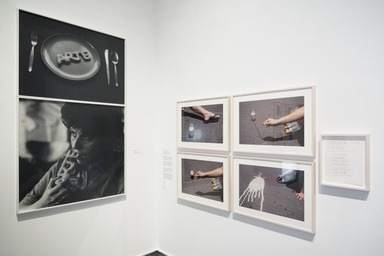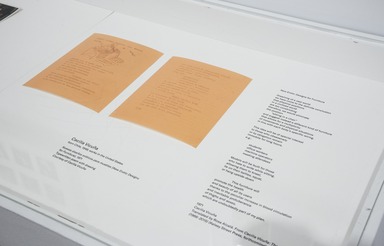

Radical Women: Latin American Art, 1960-1985, April 13, 2018 through July 22, 2018 (Image: DIG_E_2018_Radical_Women_01_PS11.jpg Brooklyn Museum (Photo by Jonathan Dorado) photograph, 2018)
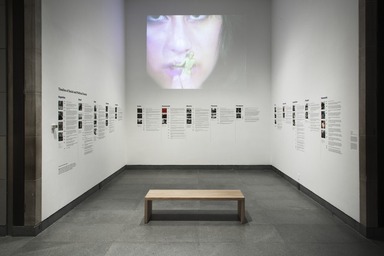
Radical Women: Latin American Art, 1960-1985, April 13, 2018 through July 22, 2018 (Image: DIG_E_2018_Radical_Women_02_PS11.jpg Brooklyn Museum (Photo by Jonathan Dorado) photograph, 2018)
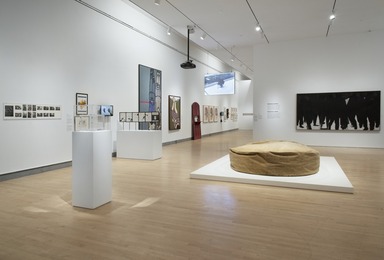
Radical Women: Latin American Art, 1960-1985, April 13, 2018 through July 22, 2018 (Image: DIG_E_2018_Radical_Women_03_PS11.jpg Brooklyn Museum (Photo by Jonathan Dorado) photograph, 2018)

Radical Women: Latin American Art, 1960-1985, April 13, 2018 through July 22, 2018 (Image: DIG_E_2018_Radical_Women_04_PS11.jpg Brooklyn Museum (Photo by Jonathan Dorado) photograph, 2018)

Radical Women: Latin American Art, 1960-1985, April 13, 2018 through July 22, 2018 (Image: DIG_E_2018_Radical_Women_05_PS11.jpg Brooklyn Museum (Photo by Jonathan Dorado) photograph, 2018)
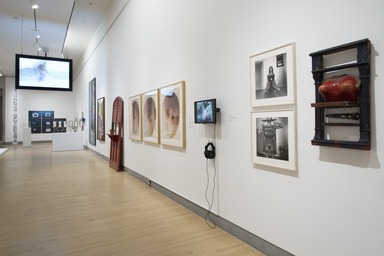
Radical Women: Latin American Art, 1960-1985, April 13, 2018 through July 22, 2018 (Image: DIG_E_2018_Radical_Women_06_PS11.jpg Brooklyn Museum (Photo by Jonathan Dorado) photograph, 2018)

Radical Women: Latin American Art, 1960-1985, April 13, 2018 through July 22, 2018 (Image: DIG_E_2018_Radical_Women_07_PS11.jpg Brooklyn Museum (Photo by Jonathan Dorado) photograph, 2018)
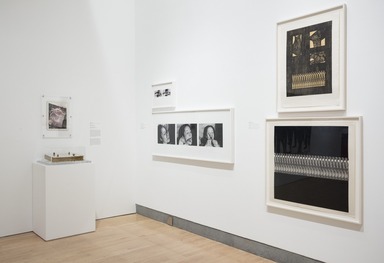
Radical Women: Latin American Art, 1960-1985, April 13, 2018 through July 22, 2018 (Image: DIG_E_2018_Radical_Women_08_PS11.jpg Brooklyn Museum (Photo by Jonathan Dorado) photograph, 2018)

Radical Women: Latin American Art, 1960-1985, April 13, 2018 through July 22, 2018 (Image: DIG_E_2018_Radical_Women_09_PS11.jpg Brooklyn Museum (Photo by Jonathan Dorado) photograph, 2018)
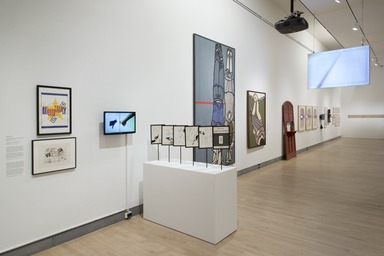
Radical Women: Latin American Art, 1960-1985, April 13, 2018 through July 22, 2018 (Image: DIG_E_2018_Radical_Women_11_PS11.jpg Brooklyn Museum (Photo by Jonathan Dorado) photograph, 2018)
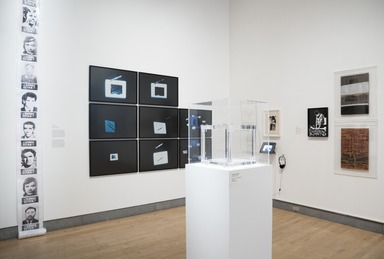
Radical Women: Latin American Art, 1960-1985, April 13, 2018 through July 22, 2018 (Image: DIG_E_2018_Radical_Women_12_PS11.jpg Brooklyn Museum (Photo by Jonathan Dorado) photograph, 2018)
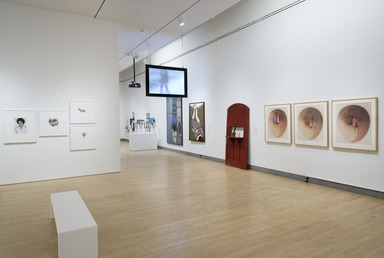
Radical Women: Latin American Art, 1960-1985, April 13, 2018 through July 22, 2018 (Image: DIG_E_2018_Radical_Women_13_PS11.jpg Brooklyn Museum (Photo by Jonathan Dorado) photograph, 2018)
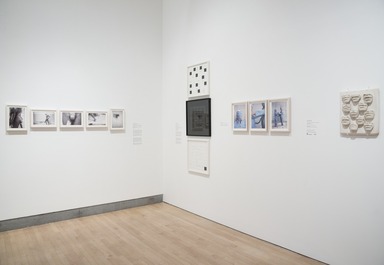
Radical Women: Latin American Art, 1960-1985, April 13, 2018 through July 22, 2018 (Image: DIG_E_2018_Radical_Women_14_PS11.jpg Brooklyn Museum (Photo by Jonathan Dorado) photograph, 2018)
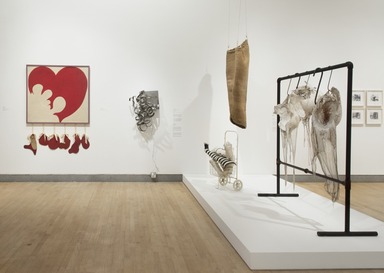
Radical Women: Latin American Art, 1960-1985, April 13, 2018 through July 22, 2018 (Image: DIG_E_2018_Radical_Women_31_PS11.jpg Brooklyn Museum (Photo by Jonathan Dorado) photograph, 2018)

Radical Women: Latin American Art, 1960-1985, April 13, 2018 through July 22, 2018 (Image: DIG_E_2018_Radical_Women_34_PS11.jpg Brooklyn Museum (Photo by Jonathan Dorado) photograph, 2018)

Radical Women: Latin American Art, 1960-1985, April 13, 2018 through July 22, 2018 (Image: DIG_E_2018_Radical_Women_35_PS11.jpg Brooklyn Museum (Photo by Jonathan Dorado) photograph, 2018)
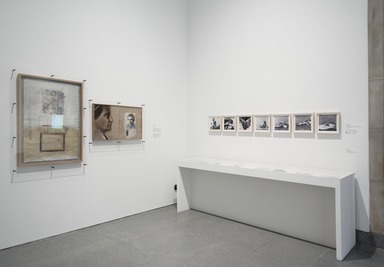
Radical Women: Latin American Art, 1960-1985, April 13, 2018 through July 22, 2018 (Image: DIG_E_2018_Radical_Women_36_PS11.jpg Brooklyn Museum (Photo by Jonathan Dorado) photograph, 2018)

Radical Women: Latin American Art, 1960-1985, April 13, 2018 through July 22, 2018 (Image: DIG_E_2018_Radical_Women_37_PS11.jpg Brooklyn Museum (Photo by Jonathan Dorado) photograph, 2018)
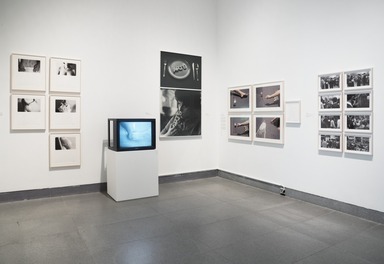
Radical Women: Latin American Art, 1960-1985, April 13, 2018 through July 22, 2018 (Image: DIG_E_2018_Radical_Women_38_PS11.jpg Brooklyn Museum (Photo by Jonathan Dorado) photograph, 2018)
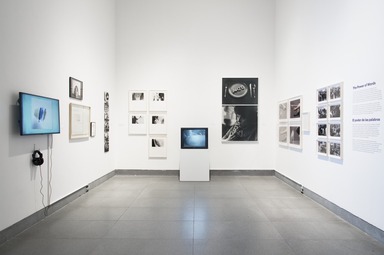
Radical Women: Latin American Art, 1960-1985, April 13, 2018 through July 22, 2018 (Image: DIG_E_2018_Radical_Women_39_PS11.jpg Brooklyn Museum (Photo by Jonathan Dorado) photograph, 2018)
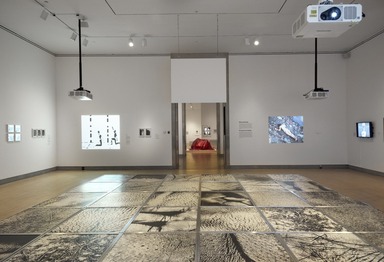
Radical Women: Latin American Art, 1960-1985, April 13, 2018 through July 22, 2018 (Image: DIG_E_2018_Radical_Women_40_PS11.jpg Brooklyn Museum (Photo by Jonathan Dorado) photograph, 2018)

Radical Women: Latin American Art, 1960-1985, April 13, 2018 through July 22, 2018 (Image: DIG_E_2018_Radical_Women_41_PS11.jpg Brooklyn Museum (Photo by Jonathan Dorado) photograph, 2018)
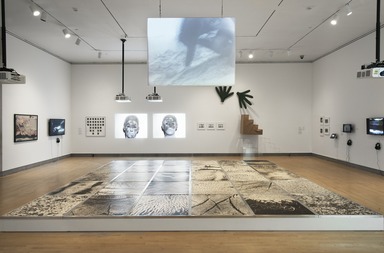
Radical Women: Latin American Art, 1960-1985, April 13, 2018 through July 22, 2018 (Image: DIG_E_2018_Radical_Women_42_PS11.jpg Brooklyn Museum (Photo by Jonathan Dorado) photograph, 2018)
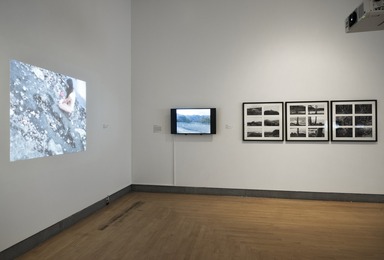
Radical Women: Latin American Art, 1960-1985, April 13, 2018 through July 22, 2018 (Image: DIG_E_2018_Radical_Women_43_PS11.jpg Brooklyn Museum (Photo by Jonathan Dorado) photograph, 2018)
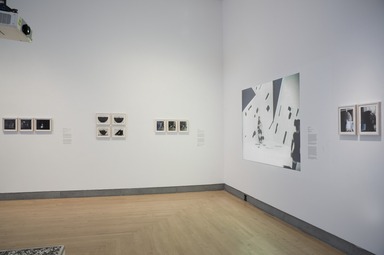
Radical Women: Latin American Art, 1960-1985, April 13, 2018 through July 22, 2018 (Image: DIG_E_2018_Radical_Women_44_PS11.jpg Brooklyn Museum (Photo by Jonathan Dorado) photograph, 2018)

Radical Women: Latin American Art, 1960-1985, April 13, 2018 through July 22, 2018 (Image: DIG_E_2018_Radical_Women_45_PS11.jpg Brooklyn Museum (Photo by Jonathan Dorado) photograph, 2018)

Radical Women: Latin American Art, 1960-1985, April 13, 2018 through July 22, 2018 (Image: DIG_E_2018_Radical_Women_46_PS11.jpg Brooklyn Museum (Photo by Jonathan Dorado) photograph, 2018)
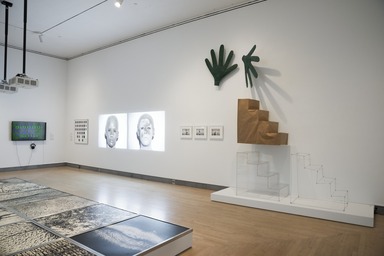
Radical Women: Latin American Art, 1960-1985, April 13, 2018 through July 22, 2018 (Image: DIG_E_2018_Radical_Women_47_PS11.jpg Brooklyn Museum (Photo by Jonathan Dorado) photograph, 2018)
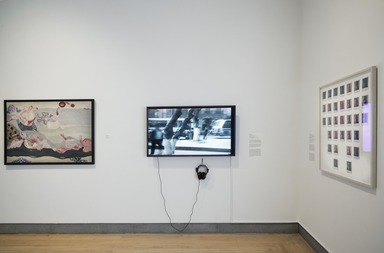
Radical Women: Latin American Art, 1960-1985, April 13, 2018 through July 22, 2018 (Image: DIG_E_2018_Radical_Women_48_PS11.jpg Brooklyn Museum (Photo by Jonathan Dorado) photograph, 2018)

Radical Women: Latin American Art, 1960-1985, April 13, 2018 through July 22, 2018 (Image: DIG_E_2018_Radical_Women_49_PS11.jpg Brooklyn Museum (Photo by Jonathan Dorado) photograph, 2018)

Radical Women: Latin American Art, 1960-1985, April 13, 2018 through July 22, 2018 (Image: DIG_E_2018_Radical_Women_50_PS11.jpg Brooklyn Museum (Photo by Jonathan Dorado) photograph, 2018)

Radical Women: Latin American Art, 1960-1985, April 13, 2018 through July 22, 2018 (Image: DIG_E_2018_Radical_Women_51_PS11.jpg Brooklyn Museum (Photo by Jonathan Dorado) photograph, 2018)

Radical Women: Latin American Art, 1960-1985, April 13, 2018 through July 22, 2018 (Image: DIG_E_2018_Radical_Women_52_PS11.jpg Brooklyn Museum (Photo by Jonathan Dorado) photograph, 2018)
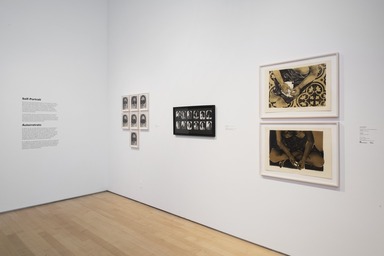
Radical Women: Latin American Art, 1960-1985, April 13, 2018 through July 22, 2018 (Image: DIG_E_2018_Radical_Women_53_PS11.jpg Brooklyn Museum (Photo by Jonathan Dorado) photograph, 2018)

Radical Women: Latin American Art, 1960-1985, April 13, 2018 through July 22, 2018 (Image: DIG_E_2018_Radical_Women_54_PS11.jpg Brooklyn Museum (Photo by Jonathan Dorado) photograph, 2018)
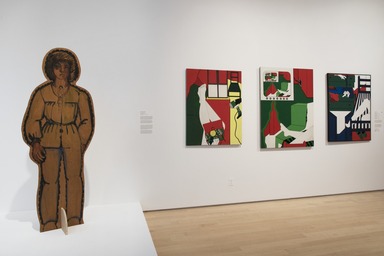
Radical Women: Latin American Art, 1960-1985, April 13, 2018 through July 22, 2018 (Image: DIG_E_2018_Radical_Women_55_PS11.jpg Brooklyn Museum (Photo by Jonathan Dorado) photograph, 2018)

Radical Women: Latin American Art, 1960-1985, April 13, 2018 through July 22, 2018 (Image: DIG_E_2018_Radical_Women_56_PS11.jpg Brooklyn Museum (Photo by Jonathan Dorado) photograph, 2018)
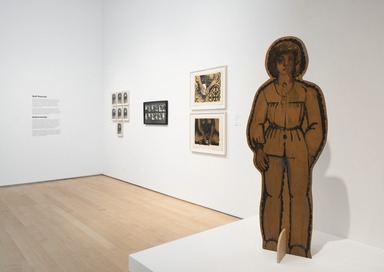
Radical Women: Latin American Art, 1960-1985, April 13, 2018 through July 22, 2018 (Image: DIG_E_2018_Radical_Women_57_PS11.jpg Brooklyn Museum (Photo by Jonathan Dorado) photograph, 2018)
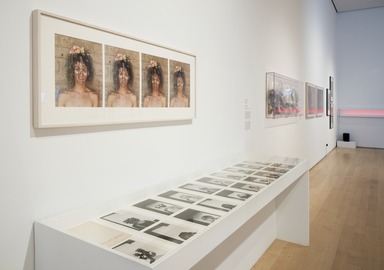
Radical Women: Latin American Art, 1960-1985, April 13, 2018 through July 22, 2018 (Image: DIG_E_2018_Radical_Women_58_PS11.jpg Brooklyn Museum (Photo by Jonathan Dorado) photograph, 2018)
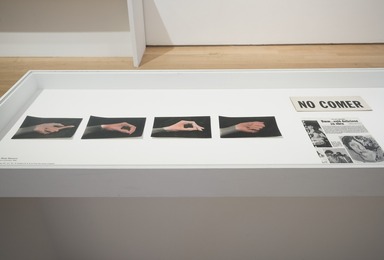
Radical Women: Latin American Art, 1960-1985, April 13, 2018 through July 22, 2018 (Image: DIG_E_2018_Radical_Women_59_PS11.jpg Brooklyn Museum (Photo by Jonathan Dorado) photograph, 2018)
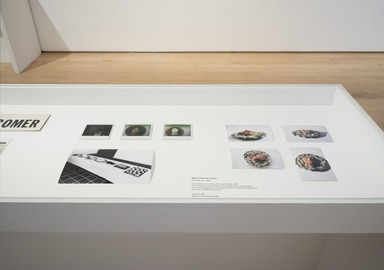
Radical Women: Latin American Art, 1960-1985, April 13, 2018 through July 22, 2018 (Image: DIG_E_2018_Radical_Women_60_PS11.jpg Brooklyn Museum (Photo by Jonathan Dorado) photograph, 2018)
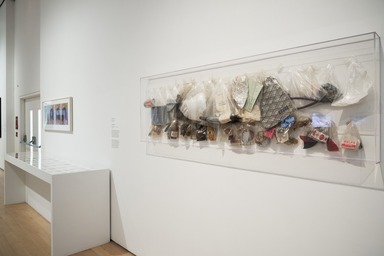
Radical Women: Latin American Art, 1960-1985, April 13, 2018 through July 22, 2018 (Image: DIG_E_2018_Radical_Women_61_PS11.jpg Brooklyn Museum (Photo by Jonathan Dorado) photograph, 2018)
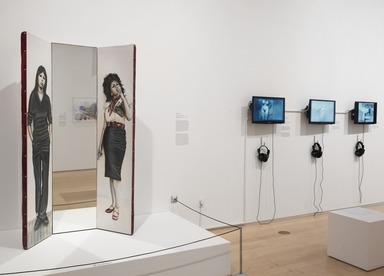
Radical Women: Latin American Art, 1960-1985, April 13, 2018 through July 22, 2018 (Image: DIG_E_2018_Radical_Women_62_PS11.jpg Brooklyn Museum (Photo by Jonathan Dorado) photograph, 2018)
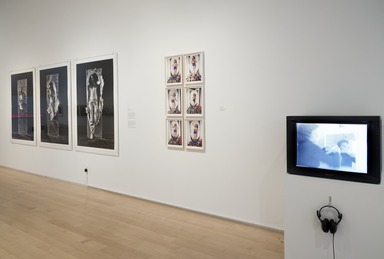
Radical Women: Latin American Art, 1960-1985, April 13, 2018 through July 22, 2018 (Image: DIG_E_2018_Radical_Women_63_PS11.jpg Brooklyn Museum (Photo by Jonathan Dorado) photograph, 2018)

Radical Women: Latin American Art, 1960-1985, April 13, 2018 through July 22, 2018 (Image: DIG_E_2018_Radical_Women_64_PS11.jpg Brooklyn Museum (Photo by Jonathan Dorado) photograph, 2018)

Radical Women: Latin American Art, 1960-1985, April 13, 2018 through July 22, 2018 (Image: DIG_E_2018_Radical_Women_65_PS11.jpg Brooklyn Museum (Photo by Jonathan Dorado) photograph, 2018)
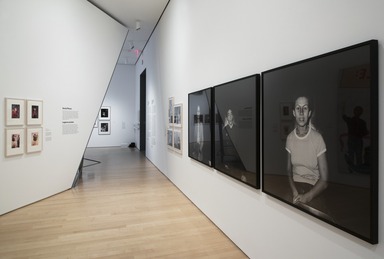
Radical Women: Latin American Art, 1960-1985, April 13, 2018 through July 22, 2018 (Image: DIG_E_2018_Radical_Women_66_PS11.jpg Brooklyn Museum (Photo by Jonathan Dorado) photograph, 2018)
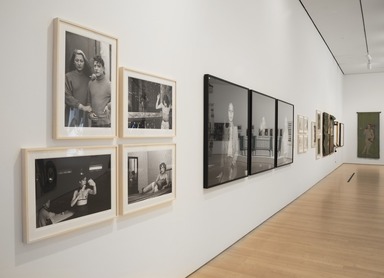
Radical Women: Latin American Art, 1960-1985, April 13, 2018 through July 22, 2018 (Image: DIG_E_2018_Radical_Women_67_PS11.jpg Brooklyn Museum (Photo by Jonathan Dorado) photograph, 2018)

Radical Women: Latin American Art, 1960-1985, April 13, 2018 through July 22, 2018 (Image: DIG_E_2018_Radical_Women_68_PS11.jpg Brooklyn Museum (Photo by Jonathan Dorado) photograph, 2018)
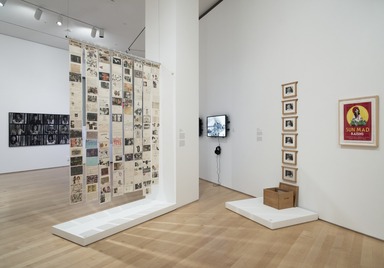
Radical Women: Latin American Art, 1960-1985, April 13, 2018 through July 22, 2018 (Image: DIG_E_2018_Radical_Women_69_PS11.jpg Brooklyn Museum (Photo by Jonathan Dorado) photograph, 2018)

Radical Women: Latin American Art, 1960-1985, April 13, 2018 through July 22, 2018 (Image: DIG_E_2018_Radical_Women_70_PS11.jpg Brooklyn Museum (Photo by Jonathan Dorado) photograph, 2018)

Radical Women: Latin American Art, 1960-1985, April 13, 2018 through July 22, 2018 (Image: DIG_E_2018_Radical_Women_71_PS11.jpg Brooklyn Museum (Photo by Jonathan Dorado) photograph, 2018)

Radical Women: Latin American Art, 1960-1985, April 13, 2018 through July 22, 2018 (Image: DIG_E_2018_Radical_Women_72_PS11.jpg Brooklyn Museum (Photo by Jonathan Dorado) photograph, 2018)
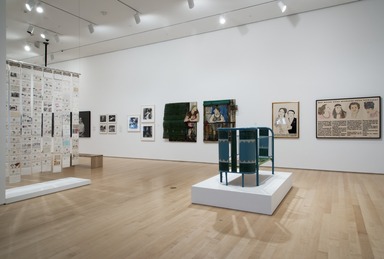
Radical Women: Latin American Art, 1960-1985, April 13, 2018 through July 22, 2018 (Image: DIG_E_2018_Radical_Women_73_PS11.jpg Brooklyn Museum (Photo by Jonathan Dorado) photograph, 2018)
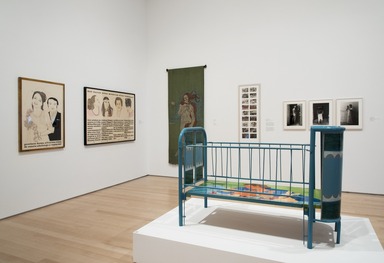
Radical Women: Latin American Art, 1960-1985, April 13, 2018 through July 22, 2018 (Image: DIG_E_2018_Radical_Women_74_PS11.jpg Brooklyn Museum (Photo by Jonathan Dorado) photograph, 2018)

Radical Women: Latin American Art, 1960-1985, April 13, 2018 through July 22, 2018 (Image: DIG_E_2018_Radical_Women_75_PS11.jpg Brooklyn Museum (Photo by Jonathan Dorado) photograph, 2018)
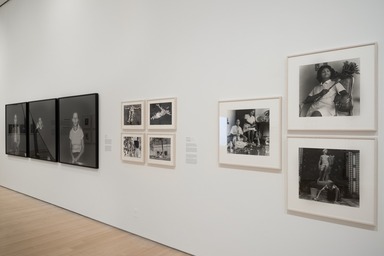
Radical Women: Latin American Art, 1960-1985, April 13, 2018 through July 22, 2018 (Image: DIG_E_2018_Radical_Women_76_PS11.jpg Brooklyn Museum (Photo by Jonathan Dorado) photograph, 2018)
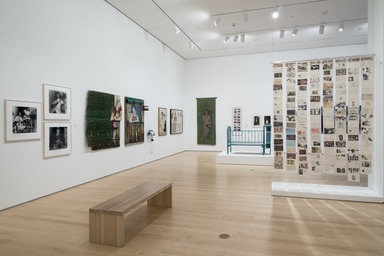
Radical Women: Latin American Art, 1960-1985, April 13, 2018 through July 22, 2018 (Image: DIG_E_2018_Radical_Women_77_PS11.jpg Brooklyn Museum (Photo by Jonathan Dorado) photograph, 2018)

Radical Women: Latin American Art, 1960-1985, April 13, 2018 through July 22, 2018 (Image: DIG_E_2018_Radical_Women_78_PS11.jpg Brooklyn Museum (Photo by Jonathan Dorado) photograph, 2018)
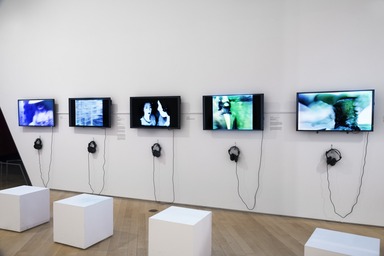
Radical Women: Latin American Art, 1960-1985, April 13, 2018 through July 22, 2018 (Image: DIG_E_2018_Radical_Women_79_PS11.jpg Brooklyn Museum (Photo by Jonathan Dorado) photograph, 2018)
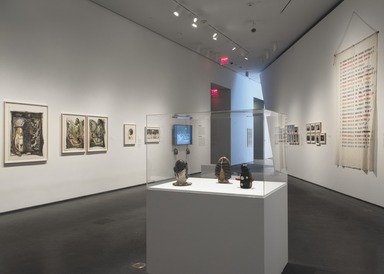
Radical Women: Latin American Art, 1960-1985, April 13, 2018 through July 22, 2018 (Image: DIG_E_2018_Radical_Women_80_PS11.jpg Brooklyn Museum (Photo by Jonathan Dorado) photograph, 2018)
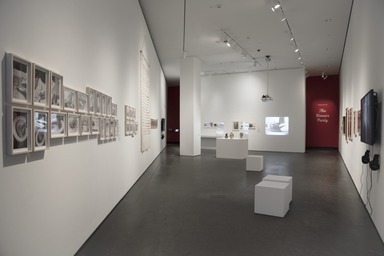
Radical Women: Latin American Art, 1960-1985, April 13, 2018 through July 22, 2018 (Image: DIG_E_2018_Radical_Women_81_PS11.jpg Brooklyn Museum (Photo by Jonathan Dorado) photograph, 2018)

Radical Women: Latin American Art, 1960-1985, April 13, 2018 through July 22, 2018 (Image: DIG_E_2018_Radical_Women_82_PS11.jpg Brooklyn Museum (Photo by Jonathan Dorado) photograph, 2018)

Radical Women: Latin American Art, 1960-1985, April 13, 2018 through July 22, 2018 (Image: DIG_E_2018_Radical_Women_83_PS11.jpg Brooklyn Museum (Photo by Jonathan Dorado) photograph, 2018)
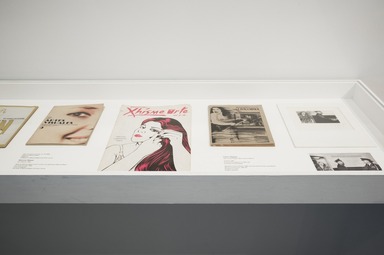
Radical Women: Latin American Art, 1960-1985, April 13, 2018 through July 22, 2018 (Image: DIG_E_2018_Radical_Women_84_PS11.jpg Brooklyn Museum (Photo by Jonathan Dorado) photograph, 2018)

Radical Women: Latin American Art, 1960-1985, April 13, 2018 through July 22, 2018 (Image: DIG_E_2018_Radical_Women_85_PS11.jpg Brooklyn Museum (Photo by Jonathan Dorado) photograph, 2018)
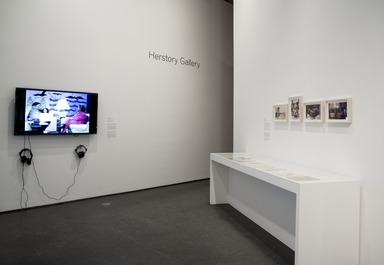
Radical Women: Latin American Art, 1960-1985, April 13, 2018 through July 22, 2018 (Image: DIG_E_2018_Radical_Women_86_PS11.jpg Brooklyn Museum (Photo by Jonathan Dorado) photograph, 2018)
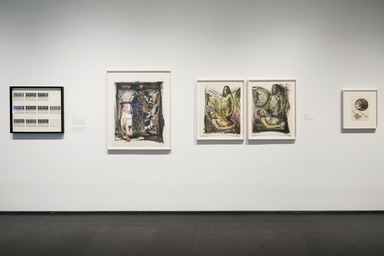
Radical Women: Latin American Art, 1960-1985, April 13, 2018 through July 22, 2018 (Image: DIG_E_2018_Radical_Women_87_PS11.jpg Brooklyn Museum (Photo by Jonathan Dorado) photograph, 2018)
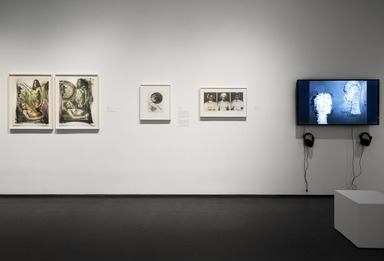
Radical Women: Latin American Art, 1960-1985, April 13, 2018 through July 22, 2018 (Image: DIG_E_2018_Radical_Women_88_PS11.jpg Brooklyn Museum (Photo by Jonathan Dorado) photograph, 2018)
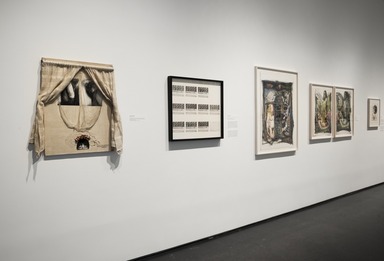
Radical Women: Latin American Art, 1960-1985, April 13, 2018 through July 22, 2018 (Image: DIG_E_2018_Radical_Women_89_PS11.jpg Brooklyn Museum (Photo by Jonathan Dorado) photograph, 2018)

Radical Women: Latin American Art, 1960-1985, April 13, 2018 through July 22, 2018 (Image: DIG_E_2018_Radical_Women_90_PS11.jpg Brooklyn Museum (Photo by Jonathan Dorado) photograph, 2018)
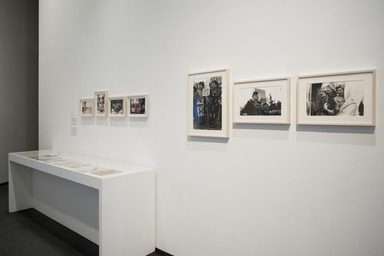
Radical Women: Latin American Art, 1960-1985, April 13, 2018 through July 22, 2018 (Image: DIG_E_2018_Radical_Women_91_PS11.jpg Brooklyn Museum (Photo by Jonathan Dorado) photograph, 2018)

Radical Women: Latin American Art, 1960-1985, April 13, 2018 through July 22, 2018 (Image: DIG_E_2018_Radical_Women_92_PS11.jpg Brooklyn Museum (Photo by Jonathan Dorado) photograph, 2018)
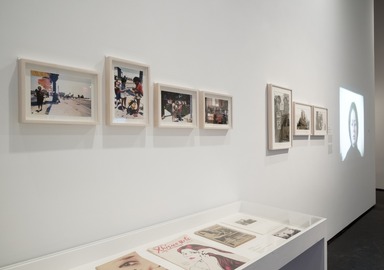
Radical Women: Latin American Art, 1960-1985, April 13, 2018 through July 22, 2018 (Image: DIG_E_2018_Radical_Women_93_PS11.jpg Brooklyn Museum (Photo by Jonathan Dorado) photograph, 2018)
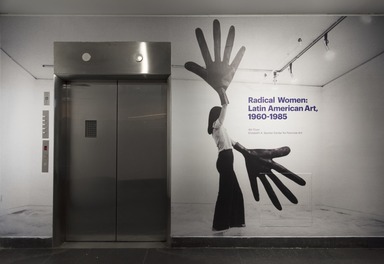
Radical Women: Latin American Art, 1960-1985, April 13, 2018 through July 22, 2018 (Image: DIG_E_2018_Radical_Women_94_PS11.jpg Brooklyn Museum (Photo by Jonathan Dorado) photograph, 2018)
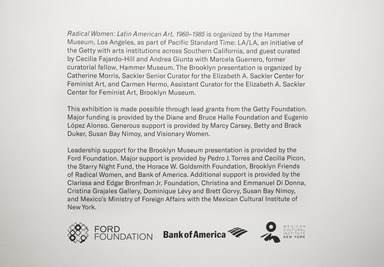
Radical Women: Latin American Art, 1960-1985, April 13, 2018 through July 22, 2018 (Image: DIG_E_2018_Radical_Women_95_PS11.jpg Brooklyn Museum (Photo by Jonathan Dorado) photograph, 2018)
Radical Women: Latin American Art, 1960-1985
-
Autorretrato
El retrato se ha centrado tradicionalmente en la representación pictórica de figuras públicas que poseen algún tipo de poder, ya sea político, económico o social y, como género, ha sido dominado por sujetos masculinos. La representación de mujeres fue más común en alegorías mitológicas, en la aristocracia y en representaciones familiares, así como también en la iconografía cristiana, como las imágenes de la Virgen María. Todas ellas reflejaban ideales de belleza restrictivos que borraban la subjetividad femenina y su complejidad intelectual.
En el siglo XX, el autorretrato se convirtió en una forma importante de autoexpresión para las mujeres. Las obras de arte reunidas en esta sección presentan narrativas conceptuales y psicológicas que cuestionan y critican nociones canónicas de belleza e identidad femenina. La identidad es explorada en modos no literales que trascienden el retrato tradicional. -
Social Places
Asserting that the social is personal, and the personal is political, artists in this section examine the social spaces that people under threat or marginalized populations build for themselves and their communities. Women artists experienced and opposed multiple other forms of social and political oppression beyond gender, and addressed the aggression of dictatorial regimes and repressive societies toward indigenous communities, transgender people, and others. The works here offer critical, political, and imaginative perspectives. -
The Power of Words
To undermine the extreme measures of repression and surveillance employed by Latin American dictatorships to control communication, both written and spoken, artists created indirect ways of addressing the harsh political realities they were experiencing. Some works use language and words as conceptual tools to challenge stereotypes and cultural taboos associated with women. Others explore the poetic and erotic potential of language.
The suppression of verbal and visual expression, compounded by patriarchal social structures, forced women artists to adopt new strategies that resisted literal readings. This section presents artworks that use the written word to describe torture, oppression, machismo, and invisibility, exploring the poetics of subjectivity, or the interpretive potential of individual experience. -
Resistance and Fear
For Latina and Latin American women artists, the relationship between the body and violence is central to their experience. Dictatorships and repressive governments—at times supported by U.S. interventions—created structures of institutional control to restrict people, including detention, imprisonment, and torture. Women were particularly vulnerable under these regimes, and some artists were imprisoned or forced into exile. As powerful expressions of political resistance, these unapologetically forceful works take a stand against state-sanctioned methods of instilling fear, documenting traumatic events often omitted from official records. -
Mapping the Body
For women artists in Latin America and Latina artists in the United States, the period between 1960 and 1985 was a time of rediscovery and reconceptualization of the female body in relation to both society and the self. Experimental works introduced radical changes in how the body was represented, challenging biological and cultural conditioning, as well as traditional definitions of female subjectivity. The works in this section propose the emancipation of the body by repudiating any sense of imposed political order or predetermined social roles. In these works, artists reimagine the female body and its possibilities. -
Presentando el cuerpo
Durante los años 60, las artistas comenzaron a utilizar sus propios cuerpos como material expresivo. Mediante una combinación de artes visuales y danza contemporánea, exploraron nuevas formas de subjetividad y de colaboración comunitaria con performances presentadas ante audiencias en vivo o documentadas en fotografías o video. Las obras aquí reunidas se ubican en la intersección entre danza, performance y teatro. A partir de una aproximación multidisciplinaria, las artistas utilizan el cuerpo como herramienta para explorar nociones de temporalidad, estética, subjetividad y participación de la audiencia. -
Performing the Body
In the 1960s artists began to use their bodies as expressive material. Combining the language of visual arts with that of contemporary dance, they explored new forms of subjectivity and community collaboration in performances presented before live audiences or documented in photographs or video. The works gathered here exist at the intersection of dance, performance, and theater. Through a multidisciplinary approach, artists use the body as a tool to explore temporality, aesthetics, subjectivity, and audience engagement. -
El cuerpo en el paisaje
Las artistas cuyas obras se muestran en esta sección exploran experiencias tanto psicológicas como íntimas de la naturaleza, mediante la performance o a través de situaciones efímeras acerca de la vitalidad y la fragilidad de la tierra. La relación de un individuo con su entorno natural es una preocupación común, bien sea en cuanto a su supervivencia mutua, la desaparición de culturas o los efectos de la actividad humana en la tierra. Mediante la representación de cuerpos libres y desinhibidos en el entorno natural, las obras incluidas en esta sección revelan operaciones conceptuales y estéticas de naturaleza simbólica, cultural y ritual. -
Self-Portrait
Portraiture has traditionally focused on the depiction of public figures who possess political, economic, or social power, and the genre has been dominated by male subjects. Representations of women were most common in mythological allegories and aristocratic and family portraits, as well as in Christian iconography, such as images of the Virgin Mary. All reflected restrictive ideals of beauty that erased female subjectivity and intellectual complexity.
In the twentieth century, self-portraiture became an important form of critical self-expression for women. The works of art in this section present conceptual and psychological narratives that challenge and critique canonical and reductive notions of beauty and female identity. Transcending traditional forms of portraiture, they explore identity in nonliteral ways. -
Mujeres radicales: arte latinoamericano, 1960–1985
Radical Women: Latin American Art, 1960–1985 presenta el trabajo de 120 mujeres artistas y colectivos, ambos activos en América Latina y los Estados Unidos durante un período clave en la historia de Latinoamérica y en el desarrollo del arte contemporáneo. Las artistas provienen de quince países, y la selección incluye figuras emblemáticas, así como artistas coetáneas menos conocidas. Esta exposición representa el primer panorama de las prácticas radicales y feministas desarrolladas tanto en América Latina como en los Estados Unidos por artistas latinas.
Las artistas en América Latina vivieron momentos tanto de represión como de liberación durante las décadas que abarca la exposición. Casi todos los países de la región estaban bajo dictaduras o fueron fracturados por guerras civiles en algún momento durante ese período. Muchas de las artistas de Radical Women, por lo tanto, vivieron experiencias de autoritarismo, encarcelamiento, exilio, tortura, violencia y censura. Sin embargo, en esta etapa también surgieron nuevas sensibilidades. Si bien pocas mujeres artistas latinoamericanas se identificaron como feministas, a menudo manifestaron en sus vidas y obras una visión del universo femenino contraria a la de los regímenes represivos firmemente arraigados en valores patriarcales. Las artistas latinas que trabajaban en los Estados Unidos desarrollaron propuestas estéticas que abordaron temas de marginalización de la mujer y de sus propias comunidades en la sociedad norteamericana. Muchas de ellas participaron en los movimientos por los derechos civiles, feministas, contra la guerra y en pro de los derechos homosexuales y para personas con discapacidad. Bien fuese viviendo en América Latina o en los Estados Unidos, las artistas se involucraron con las amplias posibilidades que les proporcionaba el momento, y mientras algunas contribuyeron a la renovación de los medios tradicionales como la pintura y la escultura, otras se dedicaron a nuevas disciplinas como el videoarte, la performance y las prácticas conceptuales.
El núcleo central de las obras que conforman Radical Women (Mujeres radicales) es la noción del cuerpo político. Los ejes temáticos en torno a los cuales fue organizada la exposición —autorretrato, lugares sociales, feminismos, resistencia y miedo, cartografiar el cuerpo, lo erótico, el cuerpo en el paisaje y presentando el cuerpo— sirven para ilustrar los intereses y las problemáticas compartidas de artistas a través de una vasta región geográfica, en una época de gran agitación social y política.
-
Radical Women: Latin American Art, 1960–1985
Radical Women: Latin American Art, 1960–1985 presents the work of more than 120 women artists and collectives active in Latin America and the United States during a key period in the history of the Americas and the development of contemporary art. The artists come from fifteen countries and include emblematic figures as well as significant, if lesser-known, contemporaries. The exhibition is the first survey of radical and feminist art practices both in Latin America and among Latina artists in the United States.
For women artists in Latin America, the decades covered by the exhibition were a time of repression as well as liberation. Most countries in the region were ruled by dictatorships or riven by civil war at some point during these years. The lives of many of the featured artists were enmeshed in experiences of authoritarianism, imprisonment, exile, torture, violence, and censorship. Yet this period also saw the emergence of new sensibilities. While few Latin American and Caribbean women artists identified as feminist, their works and lives often manifested a vision of female empowerment at odds with the region’s repressive regimes and deeply rooted patriarchal values. Latina artists working in the United States addressed the marginalization of women and of their own communities. Many of them participated in the Civil Rights, Antiwar, Gay Rights, Disability Rights, and Feminist Movements. Whether based in Latin America or the United States, the artists embraced the expanded possibilities of the era, with some revitalizing traditional mediums such as painting and sculpture and others taking up experimental new disciplines such as video art, performance, and conceptual practices.
Central to the diverse works on view in Radical Women is the notion of the politicized body. The themes around which the exhibition is organized—self-portrait, social places, feminisms, resistance and fear, mapping the body, the erotic, the power of words, body landscape, and performing the body—reveal the shared concerns of artists across a vast geographic area at a time of significant social and political upheaval. -
Lo erótico
Lo erótico ha sido dominado tradicionalmente por las fantasías sexuales masculinas, mientras que las mujeres han sido relegadas a ser objetos del deseo, en lugar de ser sujetos deseantes. Trabajando en contra de esas nociones simplistas, las artistas de esta sección abordan la temática erótica con sentido del humor, lúdicamente y desde una mirada crítica en torno a los estereotipos de la sexualidad femenina, otorgándole visibilidad a sus complejidades. La artista Teresinha Soares ha comentado que “el ejercicio sexual libre requiere libertad social y política”. Para explorar lo erótico como una expresión creativa y política, las artistas aquí reunidas desafían las normas sexuales represivas, específicamente aquellas que regulan el cuerpo femenino y el placer. -
The Erotic
The erotic has traditionally been dominated by men’s sexual fantasies, while women have been understood as objects of male desire rather than as desiring subjects. Working against such one-sided notions, the artists in this section approach erotic subject matter with a sense of humor, playfulness, and a critical eye toward stereotypical views of female sexuality, giving visibility to its complexities. As the artist Teresinha Soares has stated, “Free sexual exercise demands social and political freedom.” In order to explore the erotic as creative and political expression, the artists here challenge repressive sexual norms, specifically those regulating the female body and pleasure. -
Lugares Sociales
Partiendo de la afirmación de que lo social es personal, y lo personal es político, las artistas en esta sección examinan los espacios sociales que personas marginadas, o bajo peligro, construyen para sí mismas y para sus comunidades. Las artistas mujeres experimentaron y se enfrentaron a diversas formas de opresión social y política, más allá del género. Sus obras se ocupan de la agresión que ejercen regímenes dictatoriales y sociedades represivas sobre las comunidades indígenas, las personas transgénero, y entre otros grupos. Las obras presentadas aquí ofrecen perspectivas críticas, políticas e imaginativas. -
Feminismos
Esta sección presenta obras de artistas que se definieron a sí mismas como feministas. Aun cuando muchas de las artistas representadas en Radical Women no se autodenominaron de ese modo, sus experiencias en el patriarcado las llevaron a cuestionar el estatus problemático de las mujeres, tanto biológica como culturalmente. Debido al fuerte sentimiento anti-imperialista de la izquierda, el feminismo fue visto a menudo en América Latina como una ideología burguesa y foránea, y por ello, pocas artistas lo abordaron abiertamente. México fue el único país donde había un movimiento artístico feminista organizado durante este período, mientras que muchas artistas latinas y chicanas en los Estados Unidos integraron el feminismo en sus obras. Las obras aquí reunidas exploran formas de articular los derechos de las mujeres desde la perspectiva del activismo feminista, sea documentando protestas o creando una iconografía radical del feminismo. -
Feminisms
This section features work by artists who considered themselves feminists. While many of the artists represented in Radical Women did not define themselves this way, their experiences under patriarchy led them to question the problematic status of women as biologically and culturally defined. Owing to a strong anti-imperialist sentiment on the left, feminism was often seen as a bourgeois and foreign ideology in Latin America, and few women openly embraced it. Mexico was the only Latin American country with an organized feminist art movement in this period, while many Latinas and Chicanas in the United States integrated feminism into their art. The works here explore ways of articulating women’s rights from the perspective of feminist activism, whether documenting demonstrations or creating radical iconographies of feminism. -
El poder de las palabras
Mientras las dictaduras en América Latina empleaban medidas extremas de vigilancia para controlar el lenguaje escrito como la verbal, las artistas crearon modos indirectos de abordar las crudas realidades políticas que experimentaban. Algunas obras emplearon el lenguaje y la palabra como herramientas conceptuales para desafiar los estereotipos y tabús culturales asociados a las mujeres. Otras, por su parte, exploraron el potencial poético y erótico del lenguaje.
Debido a la imposibilidad de expresarse libremente bajo estructuras sociales de exclusión patriarcales, las mujeres artistas adoptaron nuevas estrategias que evadiesen interpretaciones literales. Esta sección presenta obras que utilizan la palabra escrita para describir experiencias de tortura, opresión, machismo e invisibilidad, así como también poéticas de la subjetividad, o el potencial interpretativo de la experiencia individual. -
Resistencia y miedo
Para las artistas latinoamericanas y latinas, la relación entre el cuerpo y la violencia es parte central de su experiencia. Dictaduras y gobiernos represivos —en ocasiones apoyados por intervenciones de EEUU— crearon estructuras de control institucional para restringir a las personas, e inducir detenciones ilegales, encarcelamientos y tortura. Las mujeres han sido particularmente vulnerables bajo estos regímenes, siendo algunas de ellas, artistas, encarceladas o forzadas al exilio. Como poderosas expresiones de resistencia política, estas audaces y contundentes obras se levantan en contra de métodos de intimidación oficial, y registran sucesos traumáticos que con frecuencia los archivos oficiales han omitido documentar. -
Cartografiar el cuerpo
Para las mujeres artistas en América Latina y las mujeres latinas en Estados Unidos, el período entre 1960 y 1985 representó una época de redescubrimiento y reconceptualización del cuerpo femenino, en relación a la sociedad y al yo. Sus obras experimentales introdujeron cambios radicales en el modo de representar el cuerpo, cuestionando condicionamientos biológicos y culturales, así como definiciones tradicionales de la subjetividad femenina. Los trabajos en esta sección proponen la emancipación del cuerpo al repudiar cualquier tipo de orden político impuesto o roles sociales predeterminados. En estas obras las artistas reimaginan el cuerpo femenino y sus posibilidades. -
Body Landscape
The artists whose works are on view here explore psychological and intimate experiences of nature, using performance or ephemeral situations to speak to both the vitality and the fragility of the land. The relationship between an individual and the environment is a frequent concern, whether in regard to their mutual survival, disappearing cultures, or the effects of human activity on the earth. Depicting liberated and uninhibited bodies in the natural environment, the works in this section reveal conceptual and aesthetic relationships that are symbolic, cultural, and ritual. -
Exhibition credits: Radical Women: Latin American Art, 1960–1985
Radical Women: Latin American Art, 1960–1985 is organized by the Hammer Museum, Los Angeles, as part of Pacific Standard Time: LA/LA, an initiative of the Getty with arts institutions across Southern California, and guest curated by Cecilia Fajardo-Hill and Andrea Giunta with Marcela Guerrero, former curatorial fellow, Hammer Museum. The Brooklyn presentation is organized by Catherine Morris, Sackler Senior Curator for the Elizabeth A. Sackler Center for Feminist Art, and Carmen Hermo, Assistant Curator for the Elizabeth A. Sackler Center for Feminist Art, Brooklyn Museum.
This exhibition is made possible through lead grants from the Getty Foundation. Major funding is provided by the Diane and Bruce Halle Foundation and Eugenio López Alonso. Generous support is provided by Marcy Carsey, Betty and Brack Duker, Susan Bay Nimoy, and Visionary Women.
Leadership support for the Brooklyn Museum presentation is provided by the Ford Foundation. Major support is provided by Pedro J. Torres and Cecilia Picon, the Starry Night Fund, the Horace W. Goldsmith Foundation, Brooklyn Friends of Radical Women, and Bank of America. Additional support is provided by the Clarissa and Edgar Bronfman Jr. Foundation, Christina and Emmanuel Di Donna, Cristina Grajales Gallery, Dominique Lévy and Brett Gorvy, Susan Bay Nimoy, and Mexico’s Ministry of Foreign Affairs with the Mexican Cultural Institute of New York.
-
December 11, 2017
The groundbreaking exhibition features more than 260 works by more than 120 artists from 15 countries
The Brooklyn Museum presents Radical Women: Latin American Art, 1960–1985, the first comprehensive exhibition to explore the pioneering artistic practices of Latin American and Latina women artists during a tumultuous and transformational period in the history of the Americas and the development of contemporary art.
Radical Women includes more than 260 works—including photography, video, and other experimental mediums, as well as paintings, sculpture, and prints—by more than 120 artists working in 15 countries. The Brooklyn Museum is the only East Coast venue of this critically acclaimed exhibition organized by the Hammer Museum in Los Angeles. Opening April 13, 2018, the exhibition will remain on view through July 22, 2018.
The artists included range from emblematic figures to less familiar names. Since the 1990s Latin American and Latina women artists such as Beatriz González, Anna Maria Maiolino, Ana Mendieta, Lygia Pape, and Cecilia Vicuña have been widely recognized for their originality and the experimental nature of their work, and they are considered to be among the most influential artists of the twentieth century. However, many other Latin American women and Latina artists are deserving of greater recognition, given their significant contributions. Puerto Rico–based Cuban artist Zilia Sánchez, for example, imbued the formal language of geometric abstraction with a sense of eroticism in the 1960s, and Los Angeles–based Chicana activist artist Judith F. Baca created vital mural paintings. Equally important are pioneering video artists such as Letícia Parente (Brazil), Narcisa Hirsch (Argentina), and Pola Weiss (Mexico), whose works employ the female body to symbolize both the restrictions imposed on women and the freedom of expression coveted by citizens across Latin America in the mid-1970s. Expanding upon the exhibition to address the Latinx communities of the New York audience, the Brooklyn Museum presentation will also include Nuyorican portraits by New York–born, Puerto Rican photographer Sophie Rivera, as well as work from Chicana graphic arts pioneer Ester Hernandez, Cuban filmmaker Sara Gomez, and Afro- Latina activist and artist Marta Moreno Vega.
Addressing an art-historical vacuum, one that has largely excluded Latin American and U.S.-based Latina women artists from the record, Radical Women highlights work created during a period of profound political and social turmoil in many Latin American countries in the 1960s, 1970s, and early 1980s, a period that saw the emergence of multiple dictatorships as well as significant and often subversive interventions by the government of the United States. The artworks in Radical Women can be viewed as heroic acts giving voice to generations of women across Latin America and the United States. Proposing both aesthetic and political radicality, the work in the exhibition foregrounds feminist concerns such as bodily autonomy, oppressive social norms, gendered violence, and the environment.
Radical Women centers on the notion of the political body. The artists represented embarked on radical and experimental artistic investigations beginning in the early 1960s, forging new paths in photography, performance, video, and conceptual art. They generated a line of inquiry focused on the politicization of the female body and sought to break free from an atmosphere of political and social repression that subjugated women. In their work, the representation of the female body became a starting point for questioning the established art-historical canon, as well as a means of denouncing social, cultural, and political acts of violence and oppression. Some artists employed the body as both an actual medium and metaphorically, using a new iconography to explore both the personal and the political. The exhibition argues that many underrecognized artists have helped to shape a more complex, expanded, and diverse field of conceptual, video, performance, and installation art in Latin America and the United States.
“Poetic and political, topics explored in the exhibition include self-portraiture, body landscape, and feminisms,” explained Andrea Giunta, co-curator of the exhibition at the Hammer Museum. “These themes draw together the artworks across national and geographic boundaries, making the case for parallel practices by artists often working in very different cultural conditions.”
Catherine Morris, Sackler Senior Curator for the Elizabeth A. Sackler Center for Feminist Art, and co-curator of the Brooklyn presentation, added, “The exhibition is a remarkable scholarly achievement, expanding the canon and complicating known narratives of conceptual art and radical art-making, while building on the legacy of important and ambitious exhibitions at the Elizabeth A. Sackler Center for Feminist Art, including We Wanted a Revolution: Black Radical Women, 1965–85, Materializing “Six Years”: Lucy R. Lippard and the Emergence of Conceptual Art, and Seductive Subversion: Women Pop Artists, 1958–1968.”
Radical Women also examines the artists’ various approaches to feminism in relation to their geographic context and their specific political and social backgrounds. In Latin America, the history of feminist militancy was not widely reflected in the arts, with the exception of Mexico and some isolated cases in the 1970s and 1980s, and in many countries feminism was not a defined movement. In the United States, Latina and Chicana artists challenged patriarchal politics that were as oppressive as those faced by their counterparts in Latin America, and many participated in the civil rights, antiwar, gay rights, disability, and feminist movements, though often from a different perspective and, at times, in opposition to mainstream feminism.
Press Area of Website
View Original
